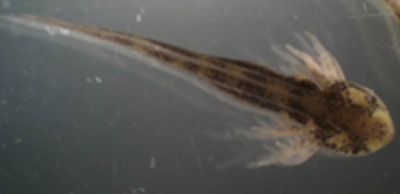|
|

|
Developmental
Effects of Transplantation of Cell and Tissue between
Axolotl Embryos
David Lawrence,
Franklin and Marshall College, Developmental
Biology
From
the various microsurgical procedures of Spemann and others,
several developmental principles have emerged about
amphibian embryos. One of the most important discoveries was
the understanding that the developmental fates of various
groups of cells are not rigidly determined early in
development. In many cases, if a multicellular fragment of
an early frog gastrula is transplanted from one region of
the embryo to another, the cells will behave as if they were
cells from the inserted site, producing structures that
would normally develop in that part of the embryo.
Later in development,
however, cells of transplanted fragments develop
differently. They tend to continue along the same
developmental pathways that they would have followed in
their original location. They differentiate as if they had
not been transplanted, thus producing an anomalous patch of
misplaced tissue.
Experiments by DuShane in
the 1930s revealed that the neural crest elements are
precursors of pigment cells. To demonstrate that the pigment
cells are derived from the neural crest, we plan to
transplant the crest material to another region of the
frog's body. Neural crest cells form a dorsally placed wedge
between the lateral wall of the neural fold and the ectoderm
on each side of the embryo, thus the removal of the lateral
neural fold removes a portion of the neural
crest.

A young axolotl
embryo.
|
|